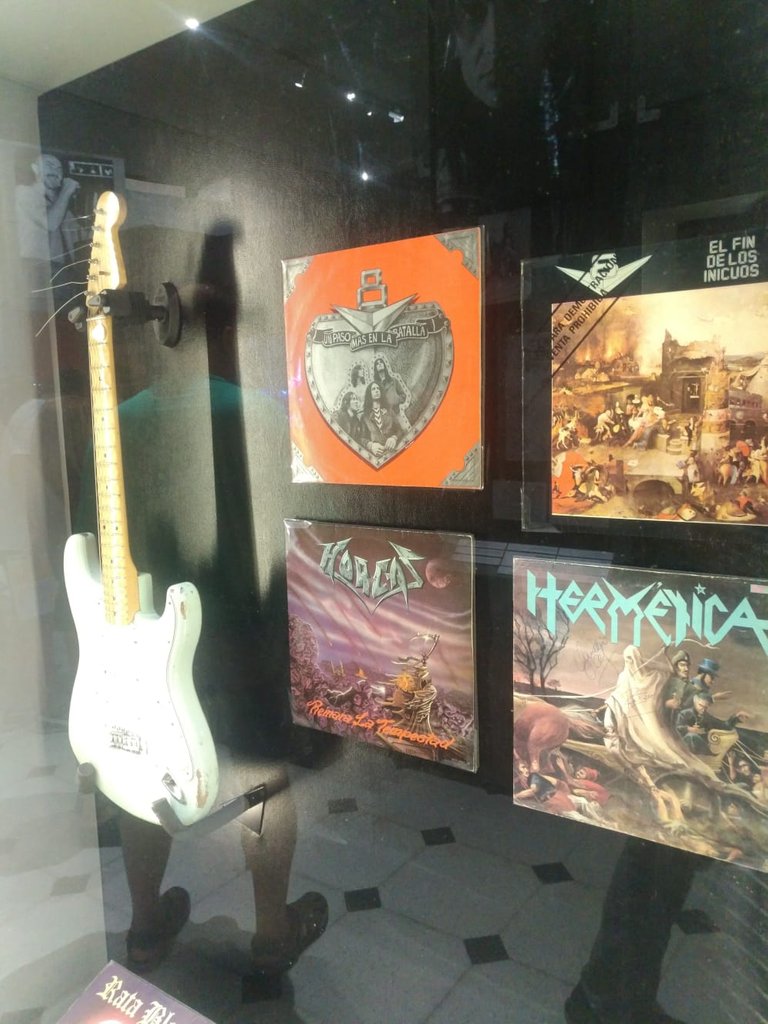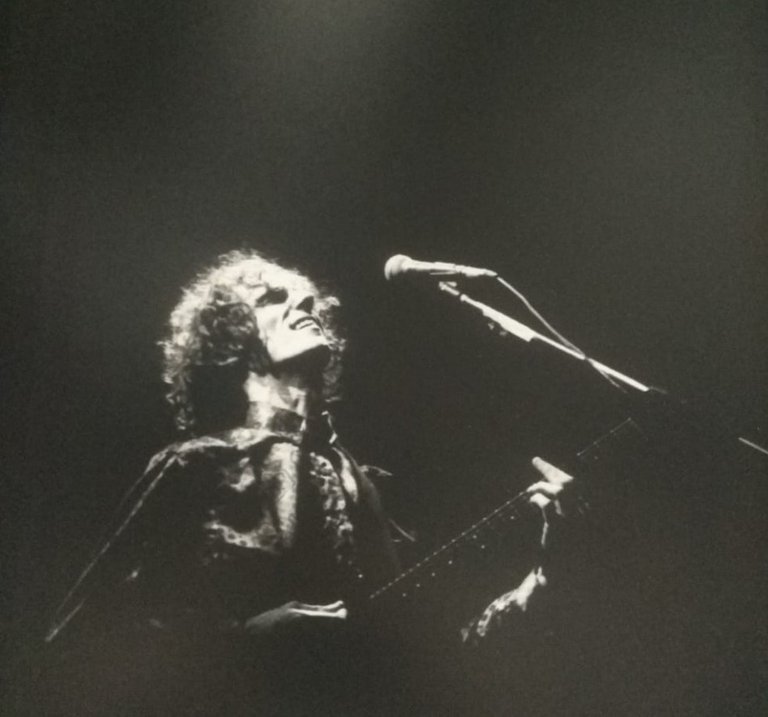
Hello friends of Hive! Happy Monday, I was walking through the streets of the city and I found an exhibition about the history of rock music in Argentina.
Hola amigos de Hive! Feliz lunes, estuve caminando por las calles de la ciudad y me encontré con una exposición sobre la historia de la música rock en Argentina.
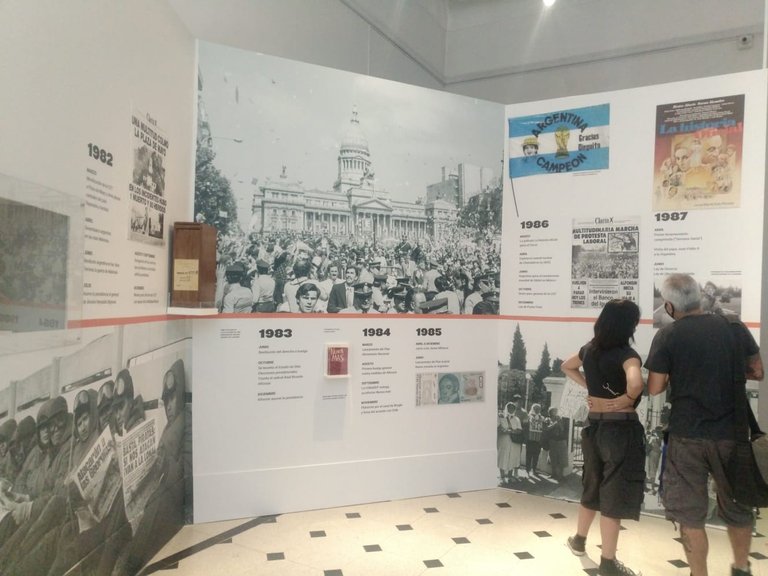
The exhibition had many photographs of groups that began their career in the 1980s, there were also some instruments on display, posters, records, drawings, videos, etc. That I will show you in the next photographs and I will tell you a little about what I learned.
La exposición contaba con bastantes fotografías de agrupaciones que empezaron su carrera en la década de los 80, también habían algunos instrumentos en exhibición, afiches, discos, dibujos, videos, etc. Que les iré mostrando en las próximas fotografías y les contaré un poco sobre lo que aprendí.
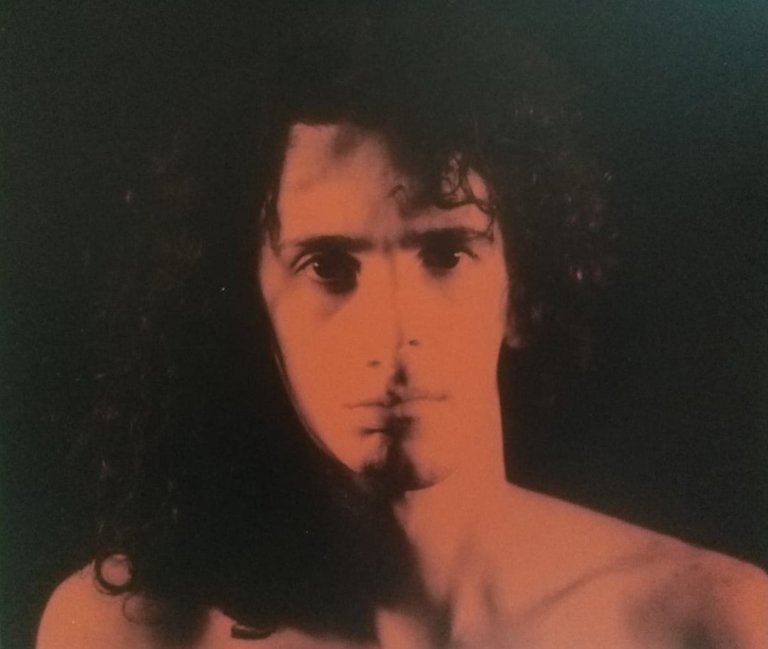
Although this musical genre was already present in the country before this decade, several political events took place, such as the end of the dictatorship, and this made the presence of rock in the streets emerge with greater strength. Apart also its sound and aesthetics were renewed, it was the beginning of a new stage of rock.
Aunque este género musical ya estaba presente en el país antes de esta década, pasaron varios acontecimientos políticos como lo fue el final de la dictadura y esto hizo que surgiera con más fuera la presencia del rock en las calles. Aparte también su sonido y la estética se renovaron, era el principio de una nueva etapa del rock.
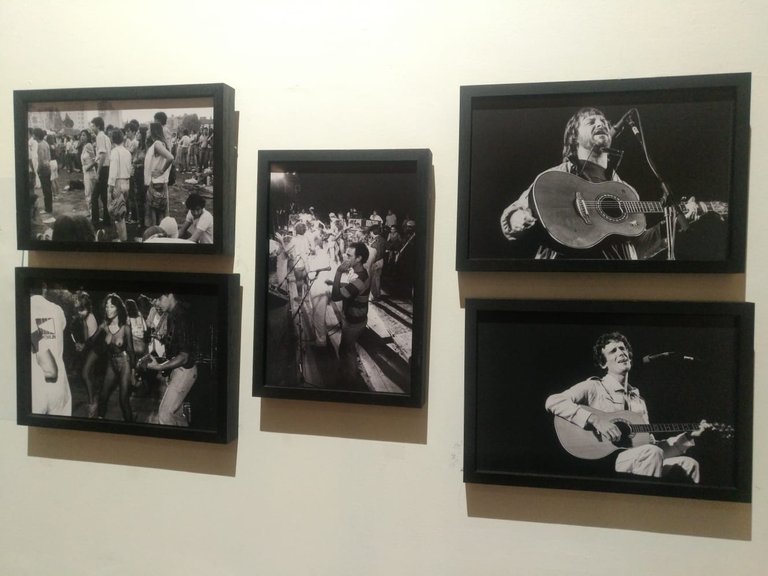
When the Malvinas War began, the military government prohibited music from being broadcast in English, but that served as an impetus in 1982 for “national rock”. By that time, the record companies recorded more than 50 new artists. Not everyone fit into what is rock as it is known today, because that term was quite elastic at the time and encompassed various musical styles.
Cuando empezó la Guerra de Las Malvinas, el gobierno militar prohibió que se transmitiera la música en inglés, pero eso sirvió como impulso en el año 1982 para el “rock nacional”. Para ese momento, las discográficas grabaron a más de 50 nuevos artistas. No todos encajaban en lo que es rock como se conoce hoy, porque ese término era bastante elástico en ese momento y abarcaba varios estilos musicales.
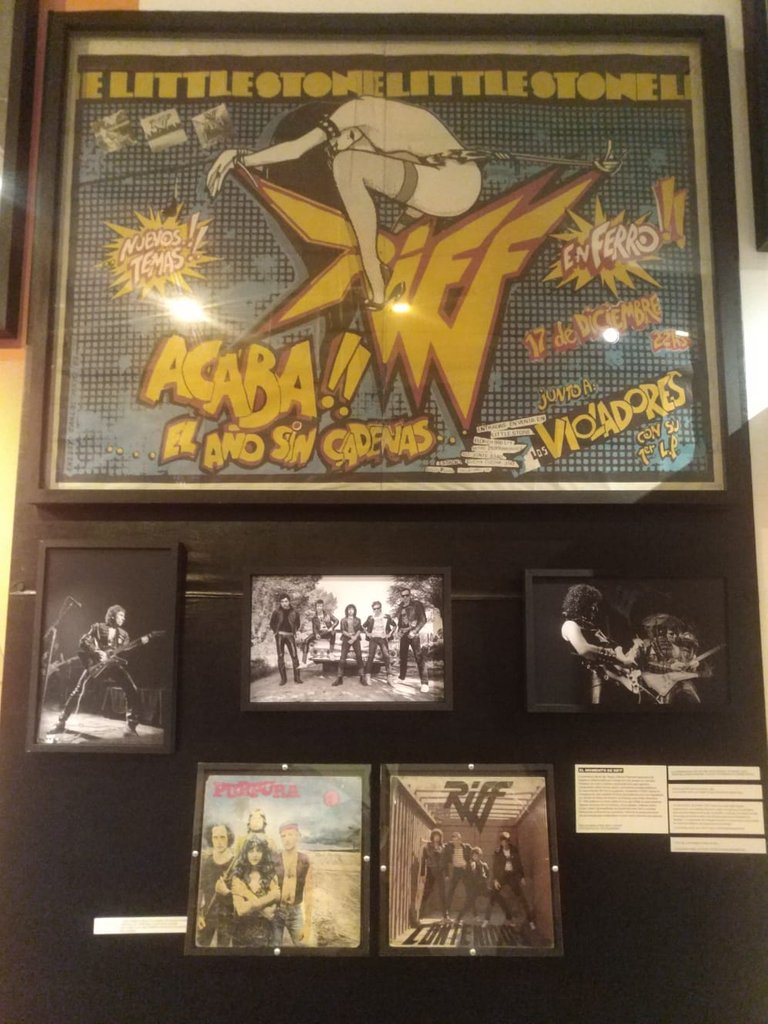
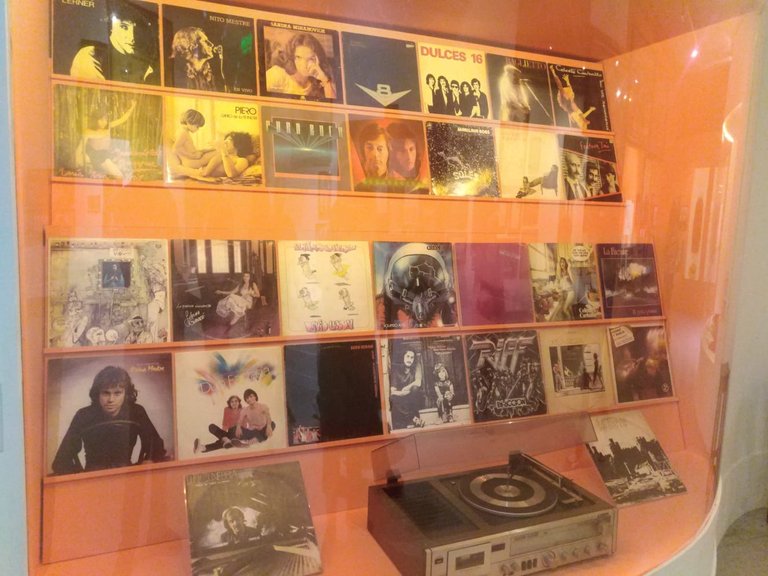
Among the musical instruments exhibited, there were pianos, synthesizers and there was one that caught my attention in particular since I had not seen it before, it is called Dossaxos2 and it was a mixture of instruments, it has the mouthpiece and neck of a tenor sax, a tuba machine and a claron bell. This belonged to Sergio Dawi, saxophonist of the band Patricio Rey y sus Redonditos de Ricota.
Dentro de los instrumentos musicales exhibidos, había pianos, sintetizadores y hubo uno que me llamó la atención en particular ya que no lo había visto antes, se llama Dossaxos2 y era una mezcla de instrumentos, posee la boquilla y tudel de un saxo tenor, una máquina de tuba y una campana de clarón. Este perteneció a Sergio Dawi, saxofonista de la banda Patricio Rey y sus Redonditos de Ricota.
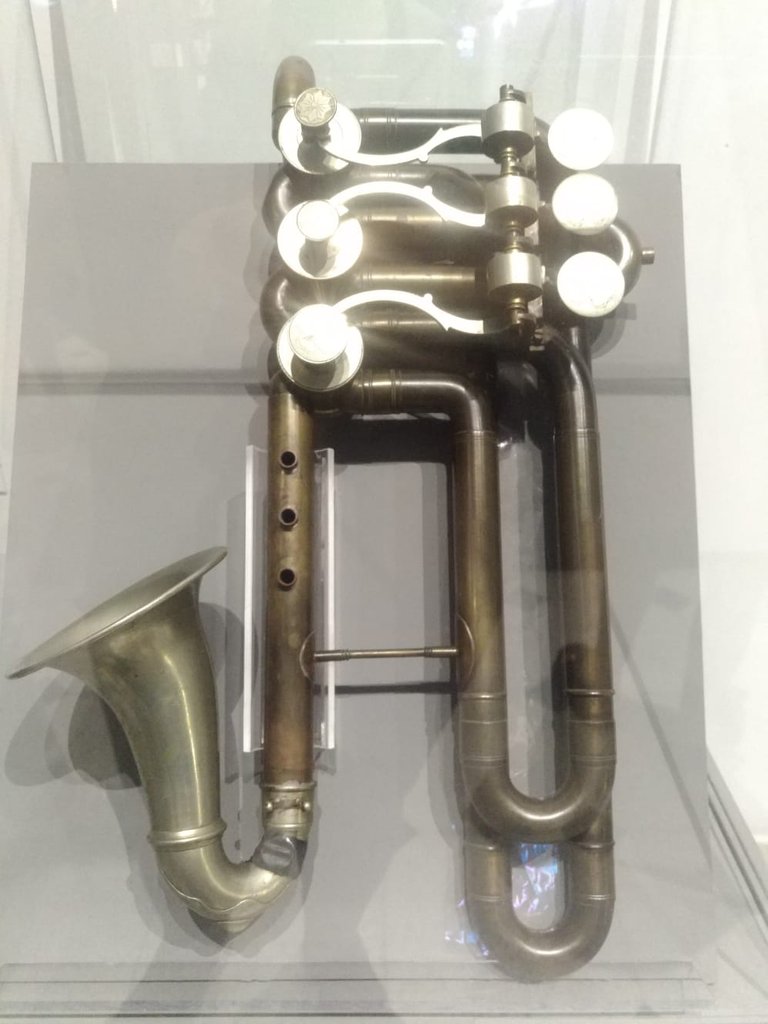
They also dedicated a space in the exhibition to Heavy Metal and Thrash Metal, there were records by the Horcas bands. This was a band made from the initiative of one of the most important guitarists on the scene at that time, Osvaldo Civile.
También dedicaron un espacio de la exposición al Heavy Metal y al Thrash Metal, habían discos de las bandas Horcas. Esta fue una banda hecha de la iniciativa de uno de los guitarristas más importantes de la escena de ese momento Osvaldo Civile.
